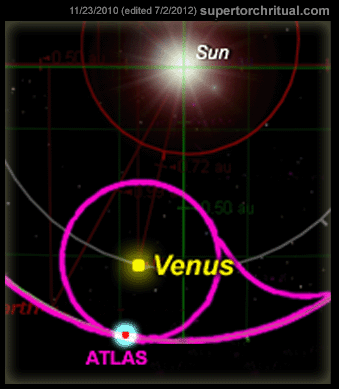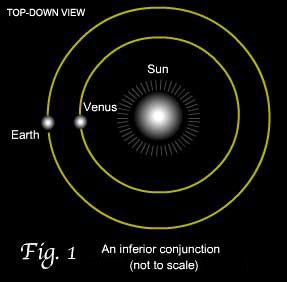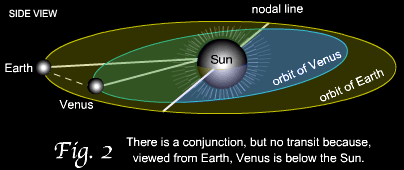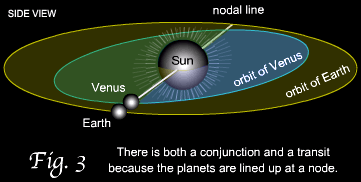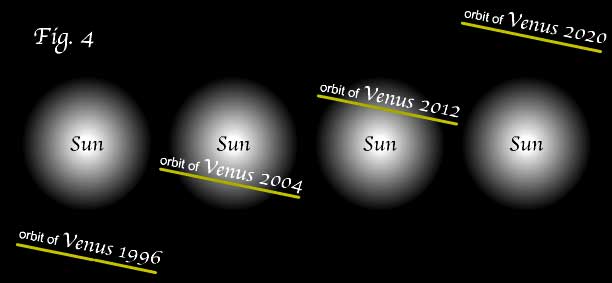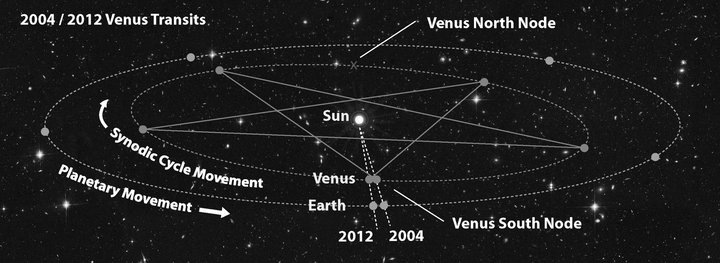Venus will be at the descending node of its orbit on Friday October 25 (at 2 Universal Time, which by American clocks is 4 or more hours, earlier, in Oct. 24).
Ascending and descending nodes keep happening and may seem among the least exciting pf astronomical events, but they shape the orbits of the moving bodies and set them up for whatever else happens. And it happens that I’ve been working on a bit for my Venus book about that planet’s plane – its inclination and nodes – and have today fashioned this space diagram.

See the end note about enlarging illustrations.
It shows the orbits of Earth in a year and of speedier Venus over seven months. The planets, at the beginnings of the months, are exaggerated 300 times in size and the Sun 5 times.
Earth moves in the ecliptic plane; Venus does not. Its plane is at an inclination of 3.4 degrees to the ecliptic. Stalks connect it to the ecliptic plane at intervals of 5 days. Also, Venus’s path is drawn with a thinner line when it is south of the ecliptic.
I chose the year 2020 because, in the 8-year Venus cycle, this is the type of year in which the inferior conjunction with the Sun happens close to descending node. Inferior conjunction is the moment when Venus passes between us and the Sun. Descending node is the moment when Venus slopes southward through the ecliptic plane. Ergo, Venus very nearly passes in front of the Sun literally.
It did so 8 and 16 years previously: the great transits. The cycle slowly evolves, and this time inferior conjunction comes just too soon – two days – before descending node. (The red line for the conjunction points slightly above the Sun; the blue line for the node points slightly to the right of the Sun.) Venus will miss the Sun on the northern side.
But the timing of the node passages determines much else. Because descending node is now, the next ascending node will be on 2020 Feb. 15. That will cause Venus’s course next April and May to be seen by us far enough north that it will cross the Pleiades and then reach its northernmost point in the whole cycle. And then to seem to rush down rapidly to the descending node in our picture.
So, back to Venus now, or tomorrow evening.

You can see that Venus is on the ecliptic. And is still almost down on the sunset horizon/ But is inching out into the evening sky, and sharp observers are already monitoring it, or her (I’m having to write a section on that question too).
At the ascending node in February she will be only just past the “First Point of Aries,” which is the ascending node of the ecliptic on the equator.
__________
ILLUSTRATIONS in these posts are made with precision but have to be inserted in another format. You may be able to enlarge them on your monitor. One way: right-click, and choose “View image”, then enlarge. Or choose “Copy image”, then put it on your desktop, then open it. On an iPad or phone, use the finger gesture that enlarges (spreading with two fingers, or tapping and dragging with three fingers). Other methods have been suggested, such as dragging the image to the desktop and opening it in other ways.





